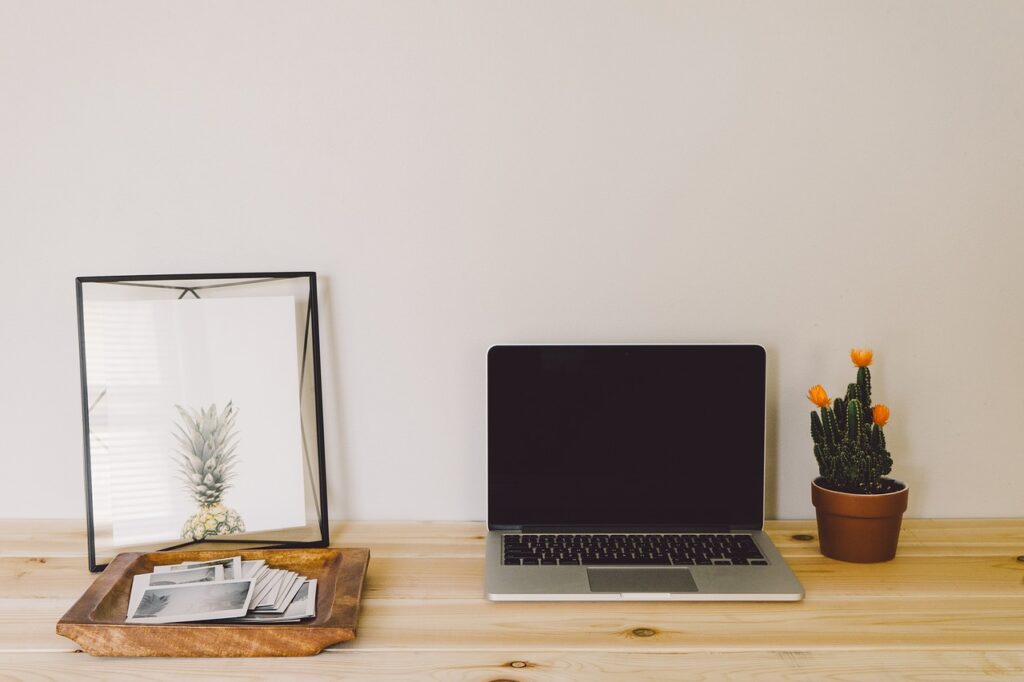Finding space to work from home can be a challenge, especially if you’re working with limited square footage. But with a bit of creativity and strategic thinking, you can carve out an effective workspace that’s functional, comfortable, and uniquely yours. Here’s how to set up an office area at home, even when space is at a premium.
- Choose a Compact Workspace Setup
When space is tight, choosing a minimalist desk and setup is essential. Instead of a traditional office desk, consider compact options like wall-mounted desks, fold-out desks, or narrow tables that can fit into smaller spaces without sacrificing usability.
Wall-Mounted Desks: A wall-mounted desk or floating shelf creates a workspace without occupying floor space, making it ideal for tight corners or nooks.
Fold-Out Desk: If you don’t need a full-time office space, a fold-out desk can be installed on a wall and folded up when not in use.
Slim Console Table: If your workspace only needs to hold a laptop and a few essentials, a slim console table can make for a stylish and functional desk in areas like entryways or hallways.
Tip: Look for desks with built-in storage or organizers, so you have a place for office supplies without adding extra clutter.
- Utilize Underutilized Spaces
Get creative with unused or awkward spaces in your home. Often, a little rearranging or reimagining of existing space can reveal hidden potential for a workspace.
Closet Office (aka “Cloffice”): Transform an unused closet into a small office by installing a desk or shelf inside. You can even add a curtain or doors to close it off when you’re not working.
Under the Stairs: The space under a staircase can make a cozy, secluded office nook. Add a desk and shelves, and you have a mini office area that’s out of the way but functional.
Hallway Corners and Entryways: Even a small corner of a hallway or an entryway can work as a designated workspace. Just add a small desk, a chair, and some decor for an inviting and practical work area.
Tip: If you don’t have a closet to convert, you can create a similar enclosed feel by using a room divider or bookshelf to define your workspace area.
- Use Vertical Space for Storage
When floor space is limited, think up! Maximizing vertical space with shelves and wall organizers can keep your workspace clutter-free and functional.
Floating Shelves: Install floating shelves above your desk area to store books, office supplies, and decor. This keeps items off your desk and within easy reach.
Pegboards and Wall Organizers: A pegboard or wall organizer can hold office supplies, notes, and even small plants. Customize it with hooks, small shelves, and baskets to fit your needs.
Hanging File Storage: Use wall-mounted file holders to keep important papers organized without taking up desk space. This is a great way to manage documents without cluttering your workspace.
Tip: To keep your workspace visually appealing, use matching containers or a color scheme for your wall storage, which can make a small space feel cohesive and organized.
- Opt for Multi-Functional Furniture
When space is limited, multi-functional furniture can be a lifesaver. Choosing items that can serve multiple purposes will help you create a workspace without overcrowding your home.
Desk and Storage Combo: Look for desks that come with built-in drawers, shelves, or cubbies to keep your essentials organized without needing extra furniture.
Folding Furniture: Furniture that can fold up or transform is perfect for multipurpose spaces. A folding chair can be stashed away when you’re not working, while a foldable desk can double as a console table when not in use.
Ottoman or Storage Bench as Seating: An ottoman or storage bench can double as seating for your desk and as a storage area for files, electronics, or office supplies.
Tip: A small rolling cart can also be helpful as a mobile office station. You can stock it with supplies and push it out of the way when you’re done working for the day.
- Use Dividers to Create Privacy
If you’re setting up a workspace in a shared or open area, dividers can help define your office space and minimize distractions.
Room Dividers and Folding Screens: A folding screen or divider can add privacy, visually separating your workspace from the rest of the room. Look for ones that fold up easily when not in use.
Bookshelf Divider: A tall bookshelf can serve as a room divider while providing storage. Place it between your workspace and the rest of the room to create a mini “office” area.
Curtains: Hang a curtain from the ceiling or on a rod to enclose your workspace temporarily. Curtains are easy to pull aside, and they add a touch of privacy without taking up much space.
Tip: A divider with built-in storage, like a bookshelf, adds both functionality and a sense of separation to help your workspace feel like its own area.
- Pay Attention to Lighting
Good lighting is essential for any workspace, but it’s especially important in a small or multi-purpose area. Using a mix of lighting options can help make your workspace more comfortable and functional.
Desk Lamps: A small desk lamp with adjustable brightness is perfect for task lighting. Look for lamps that don’t take up too much space but still provide focused light for working.
Wall-Mounted Lighting: Wall-mounted lights or sconces can provide extra illumination without taking up desk space. These are especially useful in small or corner workspaces.
Natural Light: If possible, set up your workspace near a window for natural light. This not only boosts your mood but also provides essential lighting without adding more fixtures.
Tip: Use soft, warm lighting for a cozy feel and bright, white lighting for a more focused work environment. Layering different light sources can help make a small space feel larger and more inviting.
Final Thoughts
Creating a productive and comfortable workspace doesn’t require a spare room or a lot of square footage. By using compact furniture, utilizing vertical storage, and being strategic with lighting and dividers, you can create an efficient work area in almost any home. Remember, a well-organized workspace not only enhances productivity but also brings a sense of calm and focus, making it easier to concentrate and enjoy your time spent working at home. With these tips, you can transform even the smallest of spaces into a personal office oasis.

